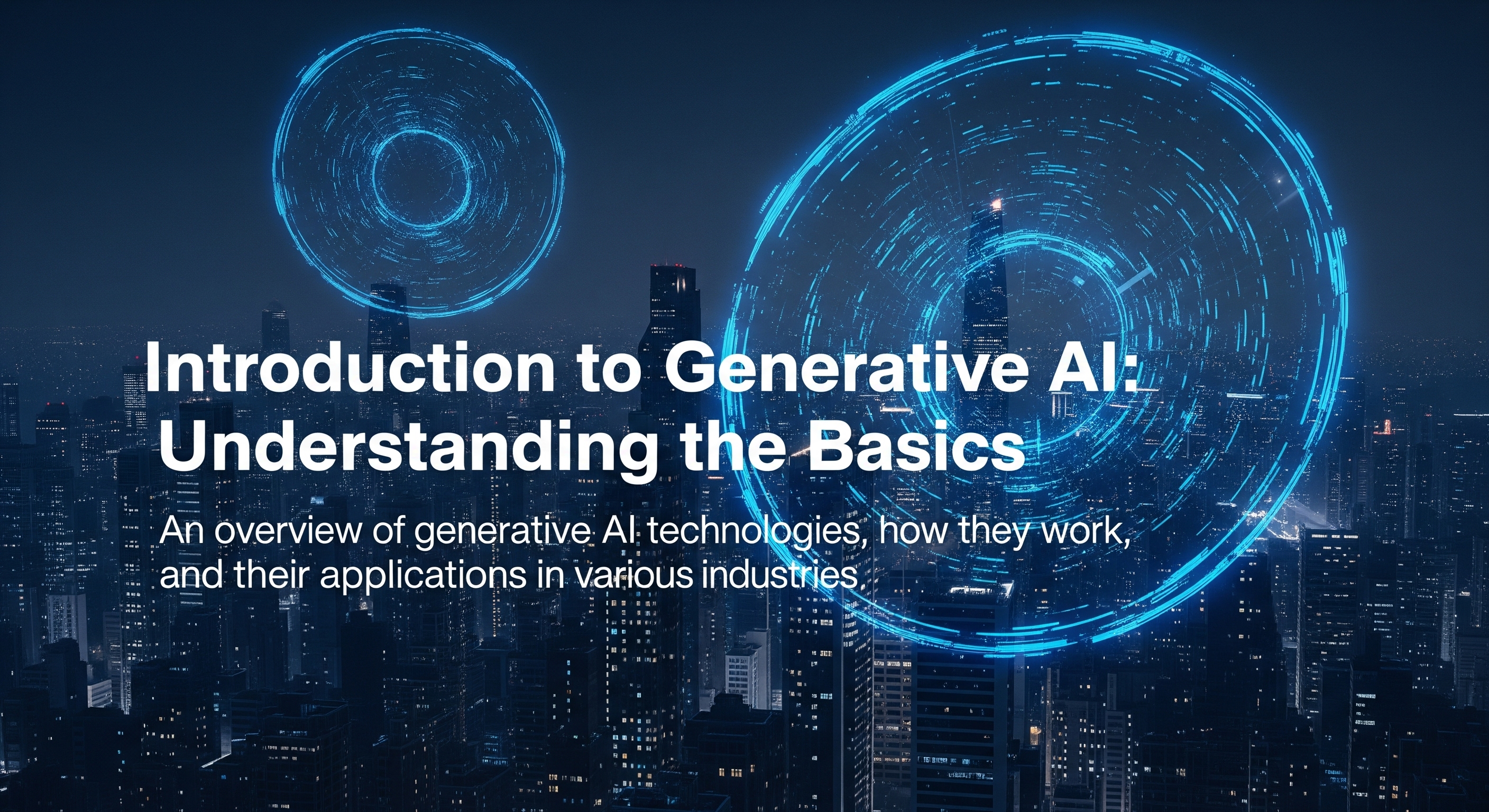Introduction to Generative AI: Understanding the Basics
An overview of generative AI technologies, how they work, and their applications in various industries.

Introduction to Generative AI: Understanding the Basics
Generative AI refers to artificial intelligence systems that can generate new content, including text, images, audio, and video, that resembles human-created content. Unlike discriminative AI models that classify or predict based on input data, generative models learn the underlying patterns and distributions of the training data to create new, similar data.
The recent explosion in generative AI capabilities has been driven by advances in deep learning architectures, particularly transformers and diffusion models, along with the availability of massive datasets and computational resources.
Key Generative AI Technologies
1. Large Language Models (LLMs)
Large Language Models like GPT (Generative Pre-trained Transformer) are trained on vast amounts of text data to generate human-like text. These models can:
- Write essays, stories, and articles
- Answer questions and engage in conversation
- Summarize long documents
- Translate between languages
- Generate code
LLMs work by predicting the next word in a sequence based on the context of previous words. Through this simple mechanism and massive scale, they've developed surprising capabilities to understand and generate coherent, contextually relevant text.
2. Image Generation Models
Image generation models can create new images from textual descriptions or modify existing images. Popular approaches include:
- Diffusion Models: Systems like DALL-E, Midjourney, and Stable Diffusion that gradually transform random noise into coherent images guided by text prompts.
- GANs (Generative Adversarial Networks): Two neural networks (a generator and a discriminator) that compete against each other to produce increasingly realistic images.
- VAEs (Variational Autoencoders): Neural networks that learn compressed representations of images and can generate new ones by sampling from this learned distribution.
3. Audio and Music Generation
AI systems can now generate realistic speech, music, and sound effects:
- Text-to-Speech (TTS): Converting written text into natural-sounding speech.
- Voice Cloning: Replicating specific voices with minimal training data.
- Music Generation: Creating original musical compositions in various styles.
Applications of Generative AI
Generative AI is being applied across numerous industries:
Content Creation
- Generating marketing copy, blog posts, and social media content
- Creating illustrations, logos, and design elements
- Producing video storyboards and animations
Entertainment and Media
- Assisting in scriptwriting and story development
- Generating concept art and visual effects
- Creating background music and sound effects
Software Development
- Generating code based on natural language descriptions
- Automating documentation
- Debugging and optimizing existing code
Challenges and Ethical Considerations
Despite their impressive capabilities, generative AI systems face several challenges:
Technical Challenges
- Hallucinations: AI models can generate plausible-sounding but factually incorrect information
- Bias: Models can perpetuate or amplify biases present in their training data
- Control: Precisely controlling the output of generative models remains difficult
Ethical Concerns
- Copyright and Ownership: Questions about the ownership of AI-generated content and the use of copyrighted material in training
- Misinformation: Potential for creating convincing fake news, deepfakes, or other deceptive content
- Privacy: Risks of generating content that reveals private information or mimics specific individuals without consent
Conclusion
Generative AI represents a significant leap in artificial intelligence capabilities, enabling machines to create content that previously required human creativity. While these technologies offer tremendous opportunities for innovation and productivity, they also present new challenges that society must address.
As generative AI continues to advance, finding the right balance between leveraging its capabilities and addressing its risks will be crucial for ensuring that these powerful tools benefit humanity.
Share this article
